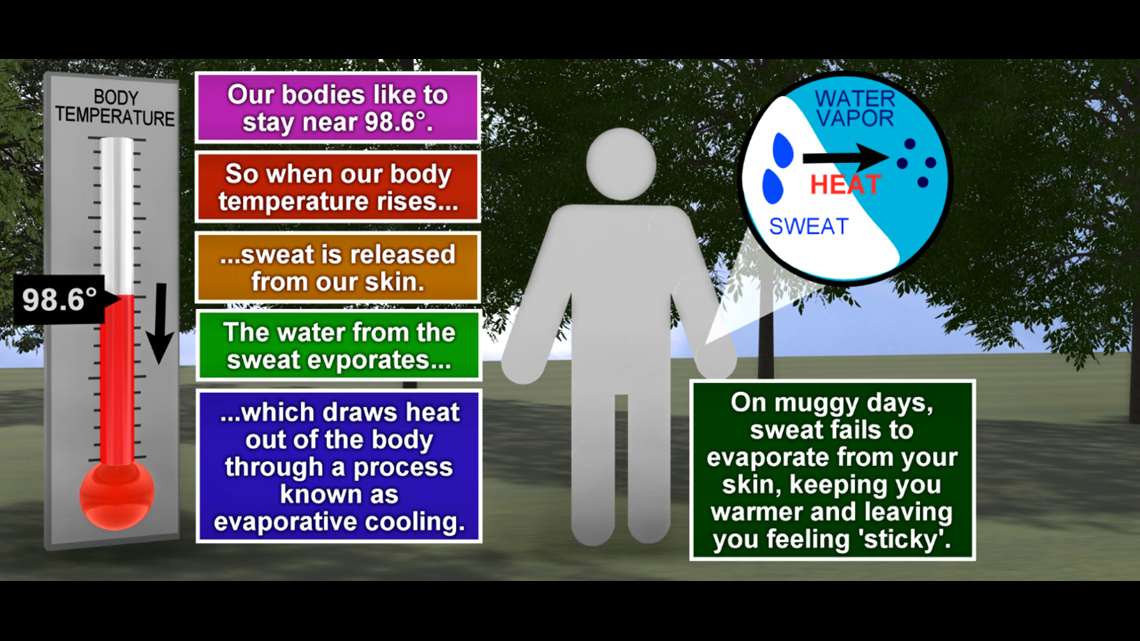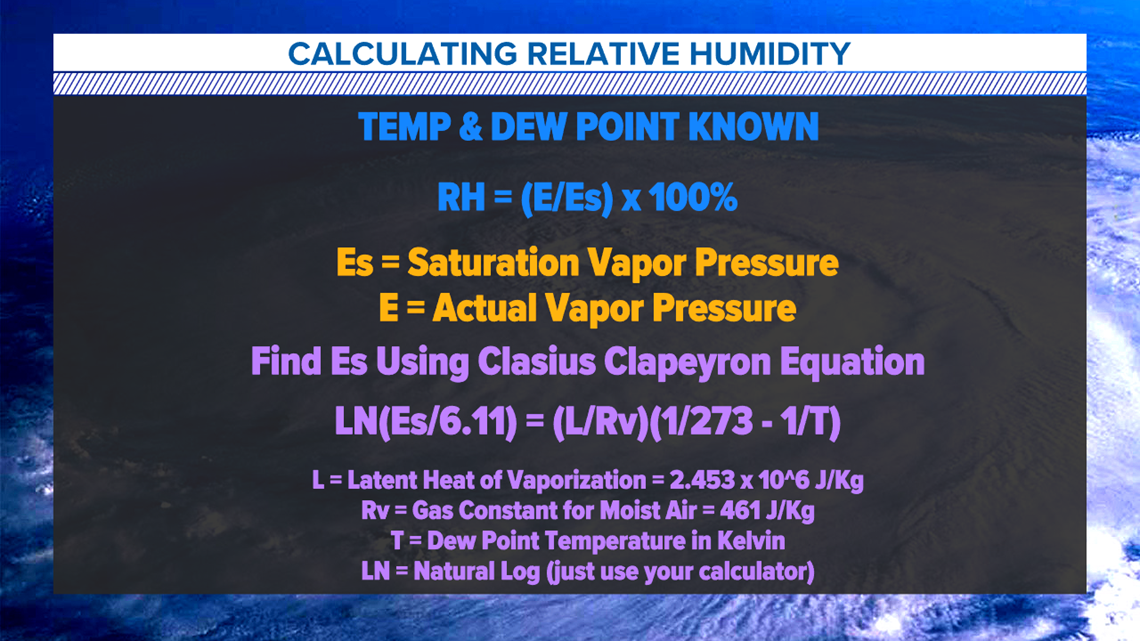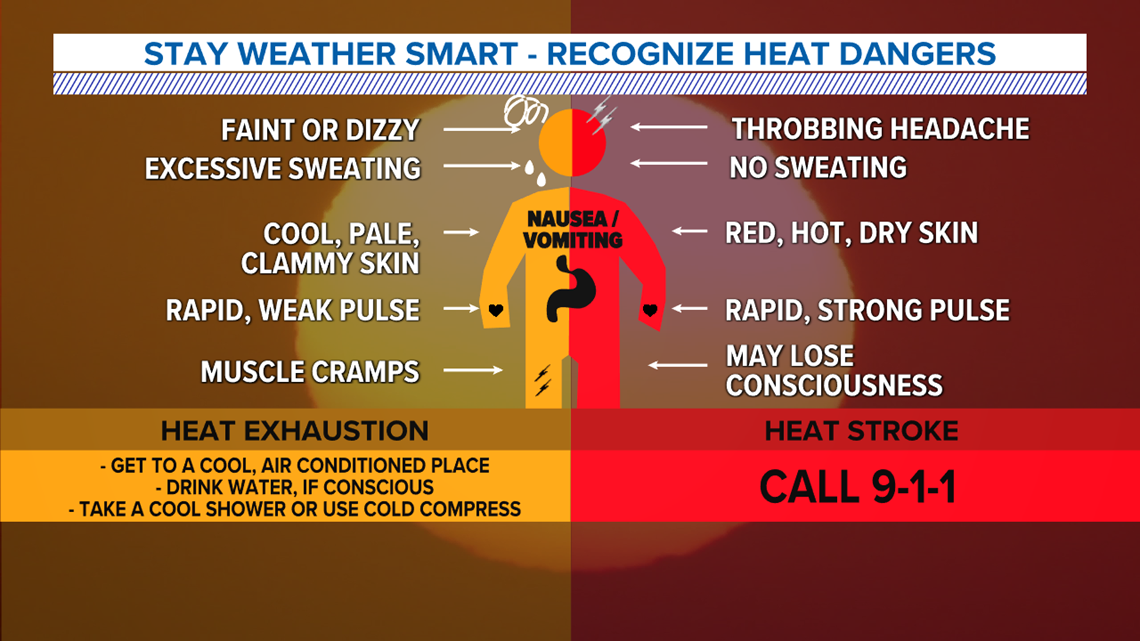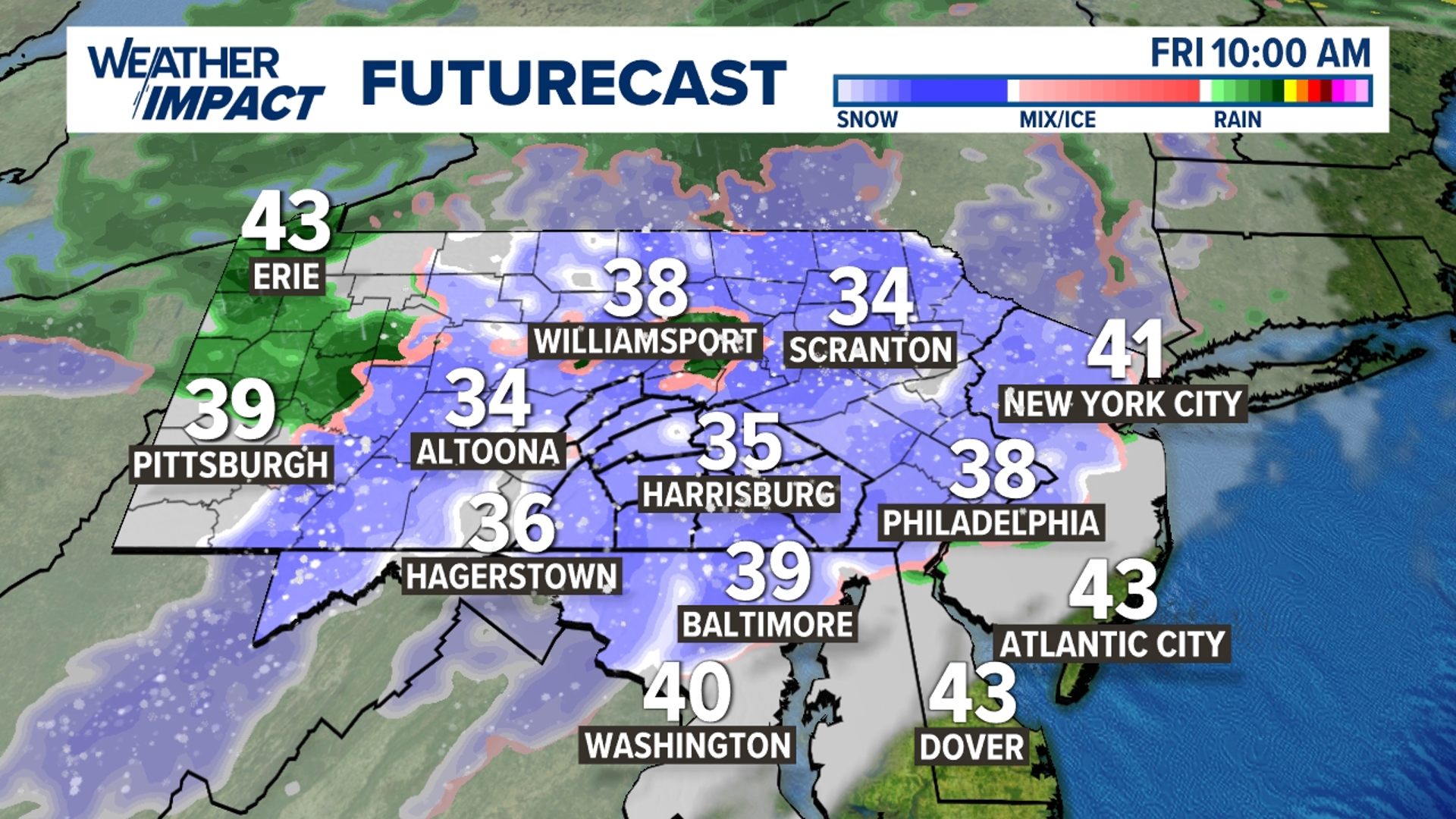The heat index is a common term thrown around this time of the year. I'll often refer to it as, "feels-like temperature" to give you a better idea of what'll hit you as you walk out the door.
The proper definition from the National Oceanic and Atmospheric Administration (NOAA) is, "a measure of how hot it really feels when relative humidity is factored in with the actual air temperature."
In basic terms, it's what the temperature feels like coupled with the moisture in the air.
In actuality, here's it in meteorological equation form in the picture below:


Isn't science fun? If you REALLY want to know why there's all of those numbers, and you have a need to make your brain hurt, you can find the analysis here from the National Weather Service.
Your body's natural temperature averages 98.6°. Any time you get warm, your body naturally cools down by releasing sweat. Water from sweat evaporates from your skin and helps regulate your internal temperature.
But the added humidity disrupts that cycle a bit. Added moisture in the air means that the air is already that much more saturated, which means it takes longer for the sweat to evaporate off of your body. That means your body can get hotter, putting more stress on yourself before the natural cooling process takes place.


When the air is drier, the exact opposite happens.
By the way, we use the term "humidity" as an more easily-understood number to indicate how much moisture is in the air. It's the percentage of how much moisture is in the air compared to how much it can actually hold (which would be 100%). Technically, a better idea of moisture content scientifically is dew point temperature, which you occasionally see me use on air. Just for "fun," here's that calculation and how we come up with relative humidity.


For example, if the air temperature is 90 degrees and the humidity is 50%, the heat index or “feels like” temperature will be 95 degrees.
At the same air temperature of 90 degrees and relative humidity of 70%, the heat index is 105 degrees. This week, we've hit heat index values higher than 105° with dew points around 70° -- very high even for the summertime.
So, it indeed is easier to work in drier conditions than more humid conditions, even if the temperatures are much hotter in the drier air.
Another example: If the temperature at a specific location would be 90°, but only with 20% relative humidity with a dry air mass, the heat index would actually be LOWER, at 86°.


When the heat index exceeds 80 degrees, fatigue is possible. When the heat index exceeds 90 degrees, heat stroke or heat exhaustion is possible. A heat index of 103 degrees or hotter means heat exhaustion is likely, heat stroke is possible. Finally, a heat index of 125 degrees or hotter is extremely dangerous, with heat stroke likely.
Stay hydrated. Limit time outdoors, especially in the afternoon. Keep your pets inside -- it's illegal in Pennsylvania to leave a pet outdoors in heat like this, even with shade and water provided. Take care of yourself.
Until next time,
-Chief Meteorologist Bradon Long
.



